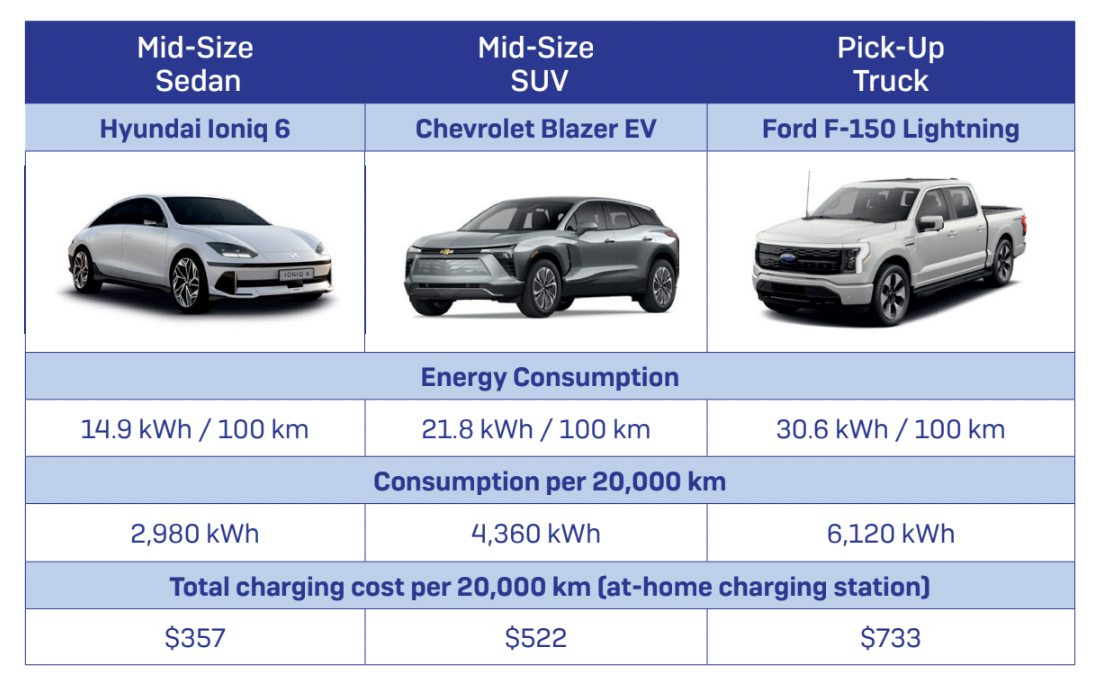Reducing your electricity consumption
Like their gasoline counterparts, larger electric vehicles, such as full-size SUVs or pickup trucks, because of their higher mass and drag coefficient (aerodynamics), consume more energy than smaller vehicles to cover the same distance.
Here is an example comparing the energy consumption of three vehicles of different sizes:

Over 20,000 km, the difference in energy consumption between the vehicle with the lowest consumption and the one with the highest (3,140 kWh) is equivalent to using a dryer for 1,570 drying cycles (1), or the equivalent of more than three and a half years' use of this appliance in a Quebec household (2).
Choosing a smaller vehicle is therefore advantageous for both energy and economic reasons, not to mention the many environmental and safety benefits.
Scheduling charging sessions to avoid peak periods
By scheduling your vehicle's charging during off-peak periods, you help reduce pressure on the power grid during periods of high demand and contribute to the collective effort towards an energy transition. You can even earn cash rewards by optimizing your electricity consumption during peak winter periods (Hydro-Québec dynamic pricing and Hilo service).
--------
(1) A drying cycle uses a variable amount of energy, depending on the length of the cycle and the make and model of the appliance. A consumption of 2 kWh per cycle is a conservative average (for a cycle of about 45 minutes).
(2) Assuming an annual average of 416 drying cycles per household (source: https://www.hydroquebec.com/residentiel/mieux-consommer/electromenagers/produits.html)